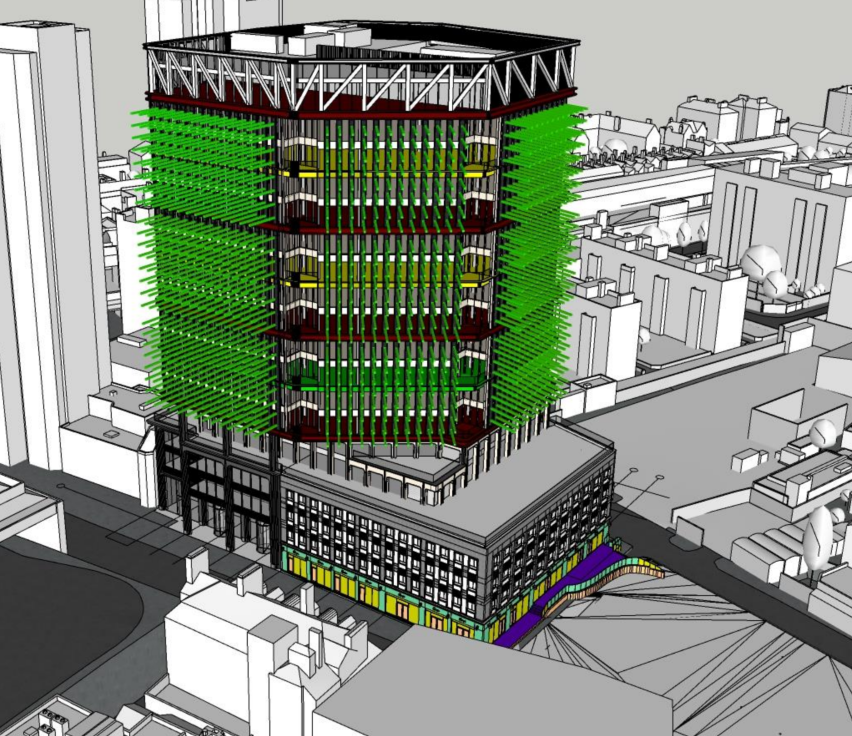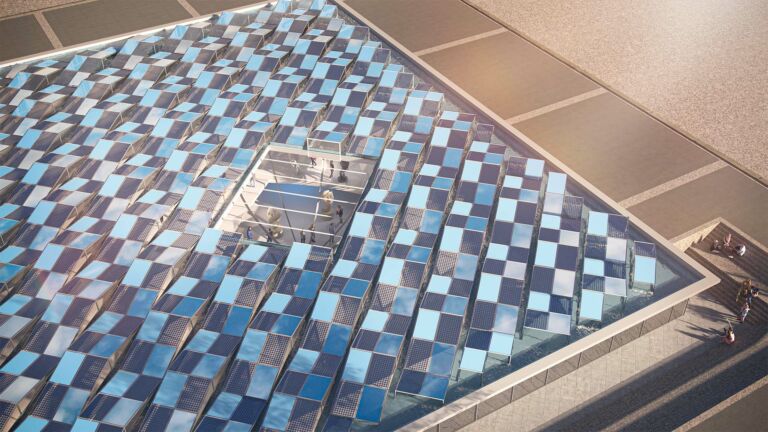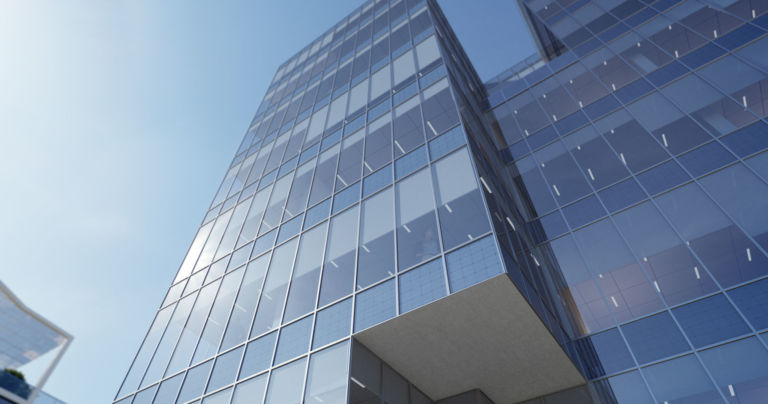
BIPV solar glass solutions
Your desire to use photovoltaic (PV) solutions may be driven by cost considerations, environmental performance and/or green certifications, such as LEED and BREEAM. In any case, a thorough solar study will allow you to accurately calculate the return on investment and meet the project’s energy specifications.
BIPV solar glass on vertical surfaces
Unlike warehouses, which can easily accommodate solar panels on their roofs, towers in urban areas have very little horizontal space – hence the need to make the most of vertical surfaces by using BIPV solar glass solutions, especially in spandrels. Based on a model of the building and its surroundings, the solar study examines the building’s sun exposure throughout the year, taking into account not only the negative impact of shading by external elements (skyscrapers, objects, trees, etc.) but also the positive impact of reflections (e.g. other glass surfaces). For each facade and the roof, the study indicates the potential power to be installed in kWp and the expected electricity output in kWh. Together with the cost of the installation, this kWh/kWp ratio is a valuable economic decision-making tool. While AGC Glass Europe can support you in the initial approach to a solar study, its specialised engineering partners, such as Sunsoak Design, carry out the in-depth study leading to a comprehensive solar balance.
Photovoltaic glass for the vision parts of a building
Photovoltaic glass modules in spandrels are opaque, with concealed solar cells. But you may be wondering about the usefulness of transparent modules incorporating visible PV cells. They are also suitable for the vision parts of the building: windows, skylights, canopies, carports, etc. The size of the modules can be customised as can the layout of the solar cells.
Since windows are meant to let light in and provide occupants with a view of the outside world, replacing standard window panes with solar glass can lead to discomfort. However, increasing the transparency of the window by reducing the number of PV cells in the solar module might no longer be cost-effective. This means you will have the delicate and difficult task of striking the right balance between comfort and profitability. By contrast, in other parts of the building (e.g. the atrium), where too much natural light causes excessive heat, BIPV solar glass could reduce transparency and save on air-conditioning costs while generating power.
Whether used in spandrels or the vision parts of the building, you can be confident that BIPV solar glass offers enormous economic and environmental potential.
1. Building-integrated photovoltaics glass products with built-in PV cells.

